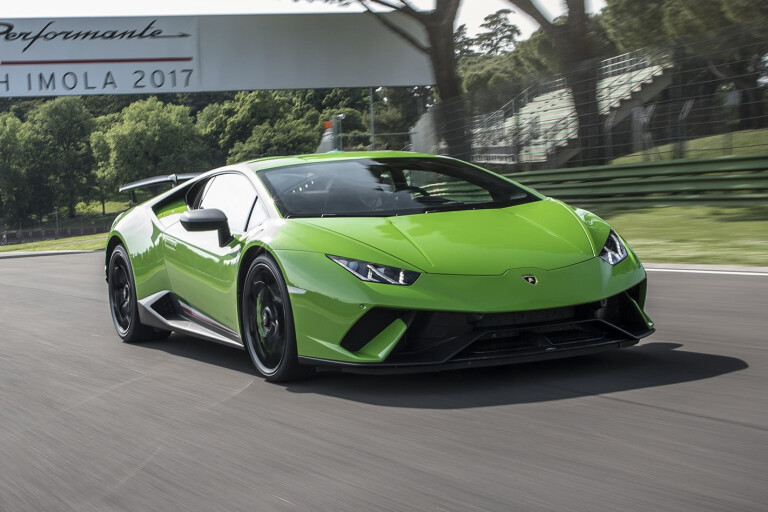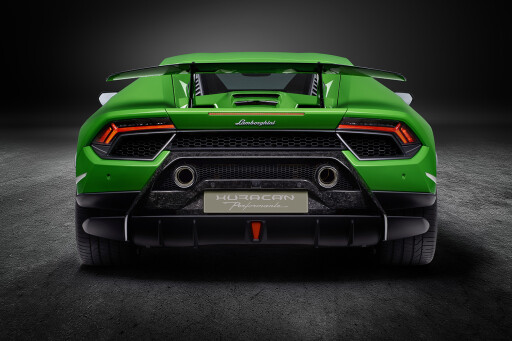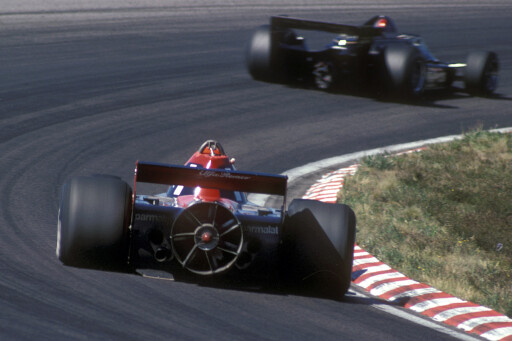
IN many ways, road car regulations are much stricter than their racing counterparts.
There are rules governing how high the lights have to be and exhaust emissions and pedestrian impact safety and hundreds of other matters. Yet ironically, in some ways, it’s road cars that offer the greater technical freedoms. There are no rules dictating how fast a car can be, or how big its engine is, and there’s no need to fear a new technology being banned should it provide an advantage over the competition.
Moveable aerodynamic devices in motorsport have been largely banned ever since the likes of the Brabham BT46B and Chapparal 2J (see below) threatened to suck the tarmac off the ground.
 These days their use is limited to overtaking aids like F1’s Drag Reduction System and road-car applications have followed a similar theme; active rear wings are now commonplace on sports cars, extending at speed to reduce drag or increase downforce as necessary, while some cars, such as the Ferrari 812 Superfast and Mercedes-AMG GT R, also use flaps in the front undertray to direct air along the most appropriate path.
These days their use is limited to overtaking aids like F1’s Drag Reduction System and road-car applications have followed a similar theme; active rear wings are now commonplace on sports cars, extending at speed to reduce drag or increase downforce as necessary, while some cars, such as the Ferrari 812 Superfast and Mercedes-AMG GT R, also use flaps in the front undertray to direct air along the most appropriate path.
Pagani was first to raise a finger into the turbulent air of more complicated active aero, its Huayra featuring four independently operable flaps – two at the front, two at the rear – which, in theory, finesse the airflow across the four corners of the car to ensure the optimum balance between straight-line efficiency and cornering downforce.
Lamborghini has now taken this concept a step further with its ALA (Aerodinamica Lamborghini Attiva) system, which debuted on the Huracan Performante. ALA uses a quartet of flaps, a linked pair in the front undertray and two in individual ducts ahead of the rear wing, to either use or bypass the Performante’s spoilers and increase downforce or reduce drag.
 In Strada (road) or Sport modes, all four flaps operate more or less in concert, however, in Corsa mode a trio of small electric motors – one operating the front pair and one each side at the rear – allow the flaps to operate independently.
In Strada (road) or Sport modes, all four flaps operate more or less in concert, however, in Corsa mode a trio of small electric motors – one operating the front pair and one each side at the rear – allow the flaps to operate independently.
In its maximum downforce mode, Lamborghini claims the Performante produces 750 per cent more downforce than a regular Huracan, yet is instantly able to shed the associated drag in a straight line. This was key to the 471kW Performante’s 6min52sec Nurburgring lap, a time faster than any other road car, including Porsche’s 652kW 918 Spyder.
Cheating accusations quickly followed, but Lamborghini produced the data, which proved ALA’s effectiveness at allowing the Performance to scream around corners yet still rocket along the straights. Expect similar systems on rival supercars soon.
Too Fast To Race
‘Fan car’ won, then vanished
The FIA banned moveable aerodynamic devices in the wake of the 1969 Spanish Grand Prix, where Graham Hill and Jochen Rindt were lucky to survive massive accidents caused by their wings failing. Article 3.15 states “any specific part of the car influencing its aerodynamic performance must remain immobile in relation to the sprung part of the car.
 ”Chaparral’s fast, but fragile 2J Can-Am car fell foul of this regulation in 1970 while Gordon Murray’s infamous Brabham ‘fan car’ was deemed legal but withdrawn after its sole dominant performance at the 1978 Swedish Grand Prix by team owner Bernie Ecclestone “for the good of the sport”.
”Chaparral’s fast, but fragile 2J Can-Am car fell foul of this regulation in 1970 while Gordon Murray’s infamous Brabham ‘fan car’ was deemed legal but withdrawn after its sole dominant performance at the 1978 Swedish Grand Prix by team owner Bernie Ecclestone “for the good of the sport”.
In both cases engine-powered fans were used to suck air out from underneath the car to create a vacuum and tremendous downforce at all speeds. Such technology used nowadays would result in cars too fast for humans to drive.
Air Travel
How it all flows
1. Life’s a drag
In Strada mode all flaps open at 70km/h to reduce drag and remain open until 310km/h at which points the front flaps close to increase front downforce and stability at high speed. In Sport all flaps once again open at 70km/h but close at 180km/h for high-speed cornering stability, only for the rear flaps to open again at 310km/h to reduce drag when approaching V-max.
2. Hunkered down
Corsa mode is where ALA proves its worth. Between 70-310km/h the three electric motors adjust the flaps to improve weight distribution, traction and reduce the required steering angle. On a straight all flaps are open to keep drag to a minimum. While the more powerful Aventador SV was able to hit higher outright speeds during its Nurburgring lap, the Performante’s ability to shed drag allowed it to reach its lower top speed quicker, improving its lap time.
3. Stopping power
As soon as the brakes are applied all flaps snap shut to provide maximum downforce across all four tyres. In corners the rear flap on the inside of the car – for example, on the left-hand side of the car in a left-hand corner – closes to provide more downforce and grip to the unloaded tyres. This might sound counter-intuitive, but it’s about evenly spreading cornering load across all four tyres rather than adding more pressure to the already heavily-stressed outer tyres.
4. Hidden secrets
Unlike on the Pagani, this process happens out of sight in the ducts ahead of the Performante’s rear wing, but every time you turn the steering wheel those rear flaps are moving to manipulate the air flow and keep you stuck to the ground.

COMMENTS